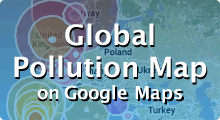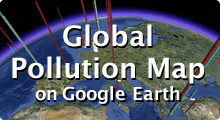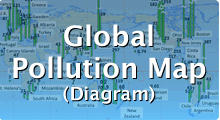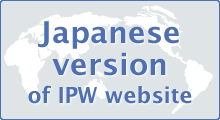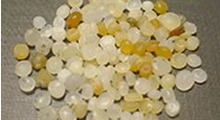Statement from Professor Hideshige Takada, Ph.D, Coordinator International Pellet Watch and researcher on microplastics, in response to the New York State government bill that would block the New York City Bag Law, due to go into effect on February 15, 2017
“Plastic bag regulation: top priority given at the United Nations HQ, Informal Consultative Process on Oceans and the Law of the Sea, 2016”
The public may commonly associate microplastics with microbeads from personal care products, yet plastic bags are a significant source of microplastics that accumulate toxins and deserve immediate consideration from policymakers due to negative environmental and health implications.
“Plastic” is a term collectively used for various polymers, of which polyethylene (PE) is the most widely used, surpassing polypropylene (PP), polystyrene (PS), polyvinyl chloride (PVC), and polyethylene terephthalate (PET). The most common application of PE is plastic shopping or carryout bags (“plastic bags” hereafter), which have a key lightweight or low-density physiochemical property. Since PE is lighter and has a lower density than water, it can float on the water’s surface, enabling it to travel long distances, as far as the open ocean. On the sea’s surface, PE is exposed to sunlight, leading to it breaking down into smaller pieces or microplastics.
One of the major problems of microplastics in the marine environment is their ability to accumulate pollutants, such as oil, PCBs and organochlorine pesticides in seawater through the sorption process. The sorption of pollutants to plastics is considered the “toxification” of plastics. The critical factor of PE in the marine environment is that it has the highest capacity of toxification among all the polymers1, 2). Therefore, International Pellet Watch (IPW, www.pelletwatch.org) is utilizing PE resin pellets as the medium to monitor marine pollution.
Ingestion of microplastics by shellfish3) and fish4, 5) has been reported in recent studies. Because plastics carry pollutants, ingestion of plastics by marine organisms can be considered internal exposure of pollutants to the biota. We have confirmed the transfer of pollutants from ingested plastics to the biological organs of seabirds6). Laboratory experiments have also confirmed the similar plastic-mediated transfer of chemicals to fish tissue7). Furthermore, recent publications8-11) suggest adverse effects of some biological functions, such as the reproduction of oyster, caused by ingested plastics and associated chemicals11). The amounts of plastics used in the experiments were larger than those observed in the current marine environment. However, the cumulative quantity of plastic input to the ocean is predicted to increase by an order of magnitude by 202512). The amounts of plastics in the marine environment are steadily increasing and microplastics are persistent in the marine environment since they cannot be removed once they enter the ocean.
Figure 1 (http://www.pelletwatch.org/maps/map-1.html) illustrates that polyethylene (PE) is dispersed throughout the globe and that all the pellets are toxified with PCBs. The same toxification occurs for PE fragments derived from plastic bags because they are made of the same polymer type as the resin pellets. Policymakers in New York City, New York State, and Northern New Jersey should be taking note of the extremely high concentration of PCBs found in the PE pellets in the New York/New Jersey regions, including the Great Lakes.
As a precautionary principle, we must reduce the inputs of plastic waste to the sea. Government policies, such as plastic bag bans, fees and taxes on single-use carryout bags, have already shown to be successful in cities, states, and countries around the world, leading to significant reduction of plastic bag usage and effectively working as a countermeasure against plastic pollution.
As mentioned above, PE, the most commonly used polymer, has the highest sorption capacity among all polymers and is most readily transformed into microplastics. At the 17th meeting of the United Nations Open-ended Informal Consultative Process on Oceans and the Law of the Sea which was held United Nations Headquarters in New York City, I stated that banning PE products must be considered as a top priority13). Protecting the New York City bag fee law is critical for reducing marine pollution caused by polyethylene, the plastic polymer with the highest toxification capacity entering our precious waterways.
Thank you so much for your attention.
Hideshige Takada, Ph.D
Coordinator of International Pellet Watch (IPW)
Professor
Laboratory of Organic Geochemistry (LOG)
Tokyo University of Agriculture and Technology,
Fuchu, Tokyo 183-8509, Japan
References
- Endo, S.; Takizawa, R.; Okuda, K.; Takada, H.; Chiba, K.; Kanehiro, H.; Ogi, H.; Yamashita, R.; Date, T., Concentration of Polychlorinated Biphenyls (PCBs) in Beached Resin Pellets: Variability among Individual Particles and Regional Differences. Mar. Pollut. Bull. 2005, 50, (10), 1103-1114.
- Rochman, C. M.; Hoh, E.; Hentschel, B. T.; Kaye, S., Long-Term Field Measurement of Sorption of Organic Contaminants to Five Types of Plastic Pellets: Implications for Plastic Marine Debris. Environ. Sci. Technol. 2013, 47, (3), 1646-1654.
- Van Cauwenberghe, L.; Janssen, C. R., Microplastics in bivalves cultured for human consumption. Environ. Pollut. 2014, 193, (0), 65-70.
- Lusher, A. L.; McHugh, M.; Thompson, R. C., Occurrence of microplastics in the gastrointestinal tract of pelagic and demersal fish from the English Channel. Mar. Pollut. Bull. 2013, 67, (1–2), 94-99.
- Tanaka, K.; Takada, H., Microplastic fragments and microbeads in digestive tracts of planktivorous fish from urban coastal waters. Scientific Reports2016, 6, 34351.
- Tanaka, K.; Takada, H.; Yamashita, R.; Mizukawa, K.; Fukuwaka, M.-a.; Watanuki, Y., Facilitated Leaching of Additive-Derived PBDEs from Plastic by Seabirds’ Stomach Oil and Accumulation in Tissues. Environ. Sci. Technol. 2015, 49, (19), 11799-11807.
- Wardrop, P.; Shimeta, J.; Nugegoda, D.; Morrison, P. D.; Miranda, A.; Tang, M.; Clarke, B. O., Chemical Pollutants Sorbed to Ingested Microbeads from Personal Care Products Accumulate in Fish. Environ. Sci. Technol. 2016, 50, (7), 4037-4044.
- Rochman, C. M.; Hoh, E.; Kurobe, T.; Teh, S. J., Ingested plastic transfers hazardous chemicals to fish and induces hepatic stress. Scientific Reports 2013, 3, 3263.
- Browne, M. A.; Niven, S. J.; Galloway, T. S.; Rowland, S. J.; Thompson, R. C., Microplastic Moves Pollutants and Additives to Worms, Reducing Functions Linked to Health and Biodiversity. Current Biology 2013, 23, (23), 2388-2392.
- Lönnstedt, O. M.; Eklöv, P., Environmentally relevant concentrations of microplastic particles influence larval fish ecology. Science2016, 352, (6290), 1213-1216.
- Sussarellu, R.; Suquet, M.; Thomas, Y.; Lambert, C.; Fabioux, C.; Pernet, M. E. J.; Le Goïc, N.; Quillien, V.; Mingant, C.; Epelboin, Y.; Corporeau, C.; Guyomarch, J.; Robbens, J.; Paul-Pont, I.; Soudant, P.; Huvet, A., Oyster reproduction is affected by exposure to polystyrene microplastics. Proceedings of the National Academy of Sciences 2016, 113, (9), 2430-2435.
- Jambeck, J. R.; Geyer, R.; Wilcox, C.; Siegler, T. R.; Perryman, M.; Andrady, A.; Narayan, R.; Law, K. L., Plastic waste inputs from land into the ocean. Science 2015, 347, (6223), 768-771.
- Report on the work of the United Nations Open-ended Informal Consultative Process on Oceans and the Law of the Sea at its seventeenth meetingLetter dated 20 July 2016 from the Co-Chairs of the Informal Consultative Process addressed to the President of the General Assembly (see page 11 for my statement) http://www.un.org/depts/los/consultative_process/documents/ICP_Report_2012

